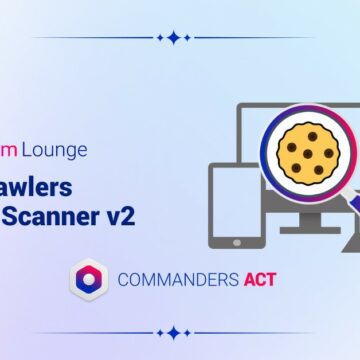Why server-side strategies (full or hybrid) are within easier reach than you might think
28/09/2021 |

Implementing a so-called server-side tag management strategy is often considered to be a challenge, except that there are two ways to go about it…
The growing popularity of ad blockers, the heralded (albeit delayed) end of third-party cookies… the latest developments sweeping the internet have focused the spotlight on server-side tag management, which is also known as tagless or server-to-server tag management. The principle is straightforward and involves moving the workload associated with information exchanges with partners from the browser to the server, but putting the system into action is often considered to be a highly technical and tricky exercise. The good news in practice is that there are two methods for implementing a server-side strategy, and one method in particular is easier to roll out…
Full server-side or hybrid server-side?
“Full server-side”. This term refers to the full implementation of a server-side tag management strategy. With this model, as soon as a user takes action (visits a page, clicks on a video, etc.), a “server hit” is sent to the TMS (Tag Management Server), which processes and sends the information to the relevant partners, from server (the TMS server) to server (the partner’s server). In this particular case, the data layer can no longer be found in the browser.
“Hybrid server-side”. This is the name that we are starting to use to refer to the other way of deploying the server-side model. This name may cause a certain amount of confusion, because “hybrid” deployment in reality corresponds to a common method that many companies apply without actually using that term.
The only difference is the data layer
The main difference between both approaches is that the hybrid model retains the data layer. But no partner tags are activated from the browser. The information in the data layer is used by a single tag that sends the information on the server-side, where the TMS (as in the previous model) processes the information prior to distribution to the partners (server to server).
What are the benefits with this hybrid approach? Its pragmatism and the accessible level of technical expertise required. Several partners have not bothered overhauling their solutions to work in the full server-side mode, meaning that they still need the information in the data layer. What gets lost with the hybrid server-side model? The only difference is that the data layer is retained, so it can still be seen in the browser. If the information contained causes issues with confidentiality, there may be justification in migrating to the full server-side mode. Otherwise, the hybrid server-side model offers all the advantages of the full server-side model.
Maintaining the advantages
There are many advantages with the server-side model. Drastically reducing the number of tags has a positive effect on page loading times, while tagging plans are easier to maintain. Everyone appreciates the operational gains. But server-side is also about (primarily?) greater data control. Whereas the information goes straight to the partners with the client-side model, information is processed and sorted with the server-side model. Partners only receive the data that they need. This strategy eliminates such risks as piggybacking, where a tag calls other tags to distribute information to partners of partners…
The server-side model also enriches the information with other sources to inject greater relevance into the processing activities. This is an interesting prospect in many respects, such as A/B testing, where this level of openness paves the way for more sophisticated tests, like measuring the impact of purchasing recommendations on revenue.
What about consent?
This is a legitimate (and often asked) question. Is the server-side model exempt from consent? In a nutshell, full and hybrid server-side models are not exempt from consent. They are merely a vehicle or a technical method. Server-side strategies may be exempt from consent in just one case, namely when the actual solution that they are supporting is exempt.











